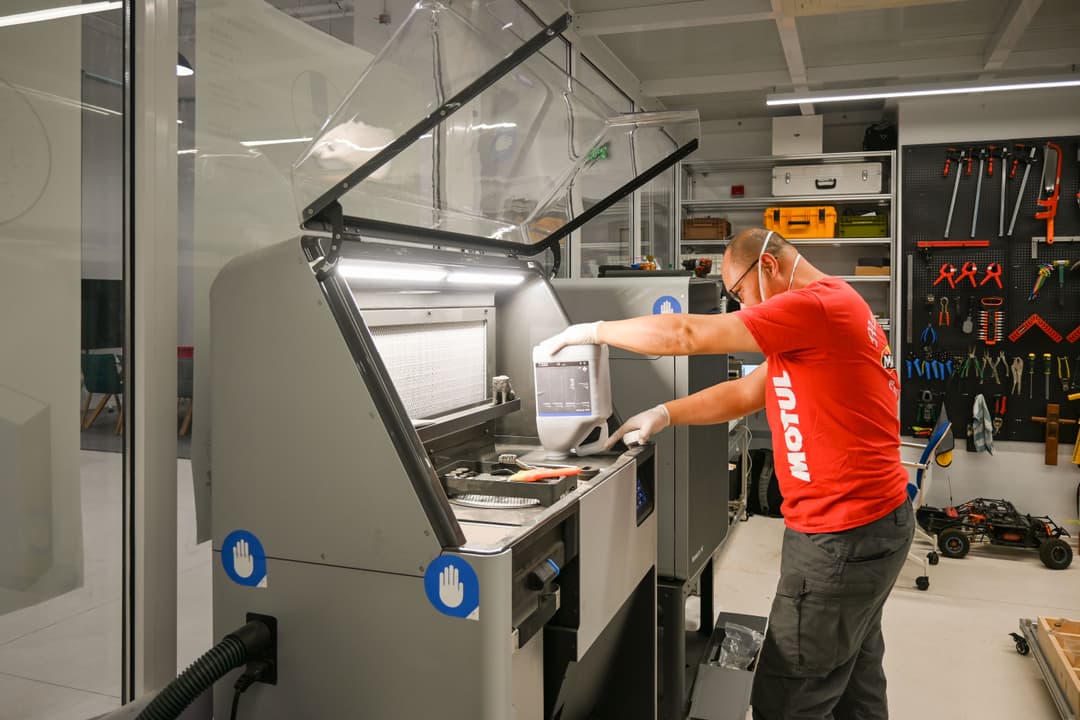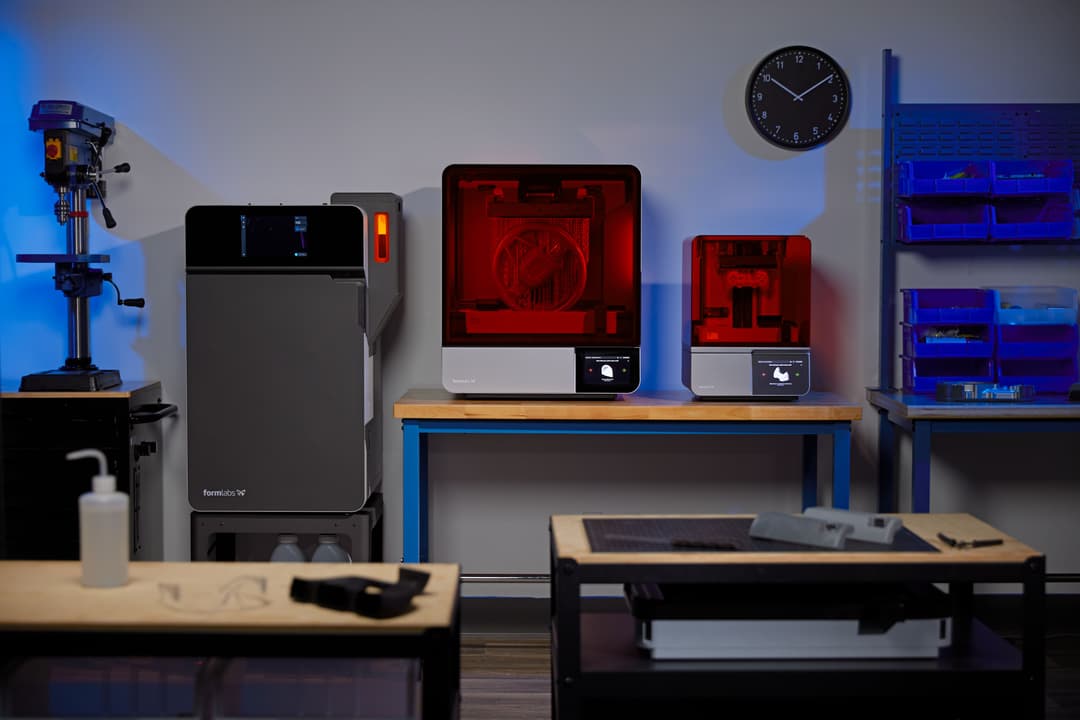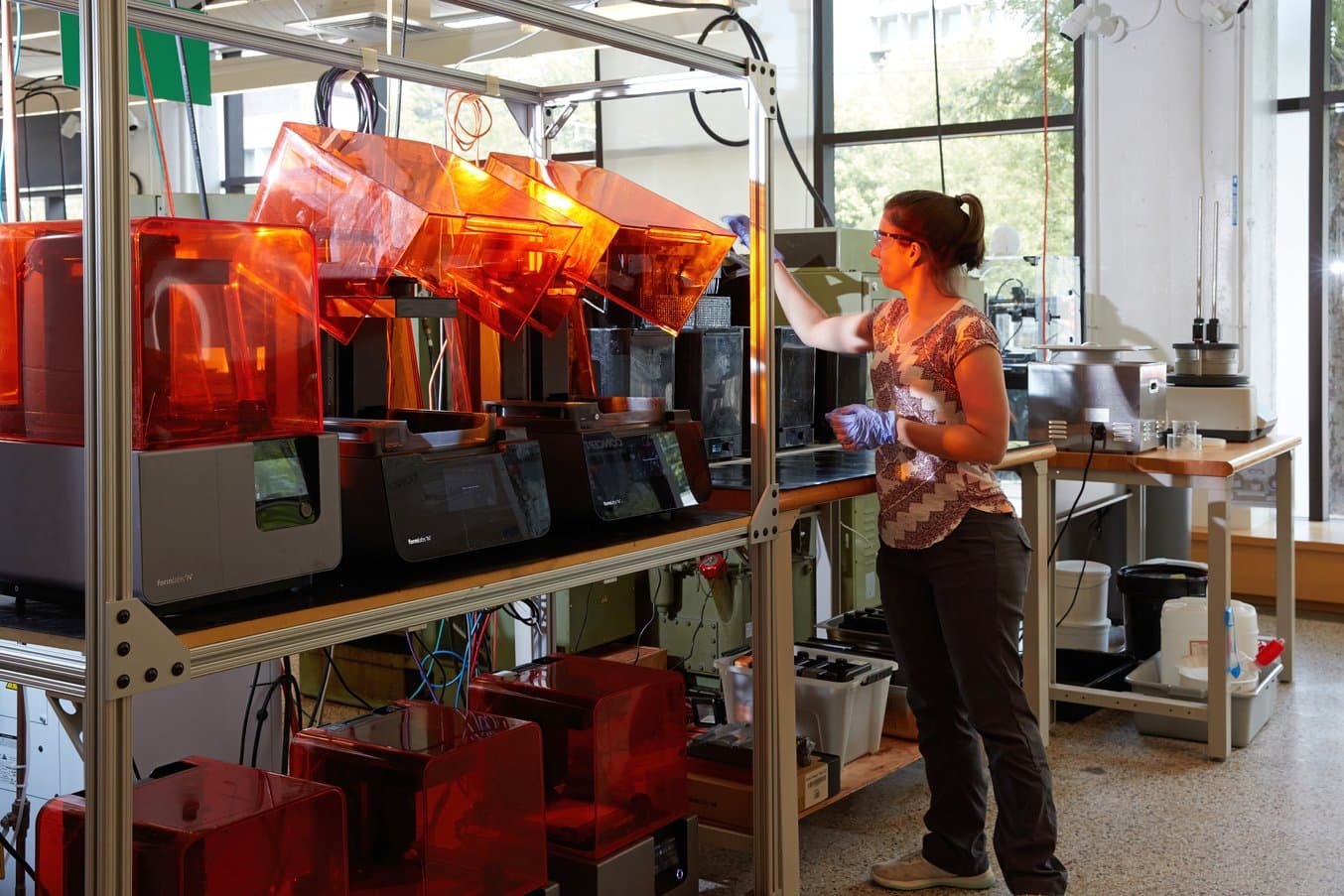
As professionals across almost every industry—healthcare, aerospace, engineering, manufacturing, and entertainment—continue to increase investment in 3D printing, the technology becomes an ever greater part of our daily lives. Many educational programs have recognized this and incorporated 3D printing into their curricula, but widespread integration of additive manufacturing into education programs will rely on greater awareness of the many benefits of 3D printing for education.
In the following guide, we’ll discuss the benefits of 3D printing in education, from improved student engagement and collaboration, to workforce development, multidisciplinary thinking patterns, and empowered creativity, as well as take a look at which technologies exist and how to choose between them.
Benefits of 3D Printing in Education
Improved Student Engagement With Hands-On Learning
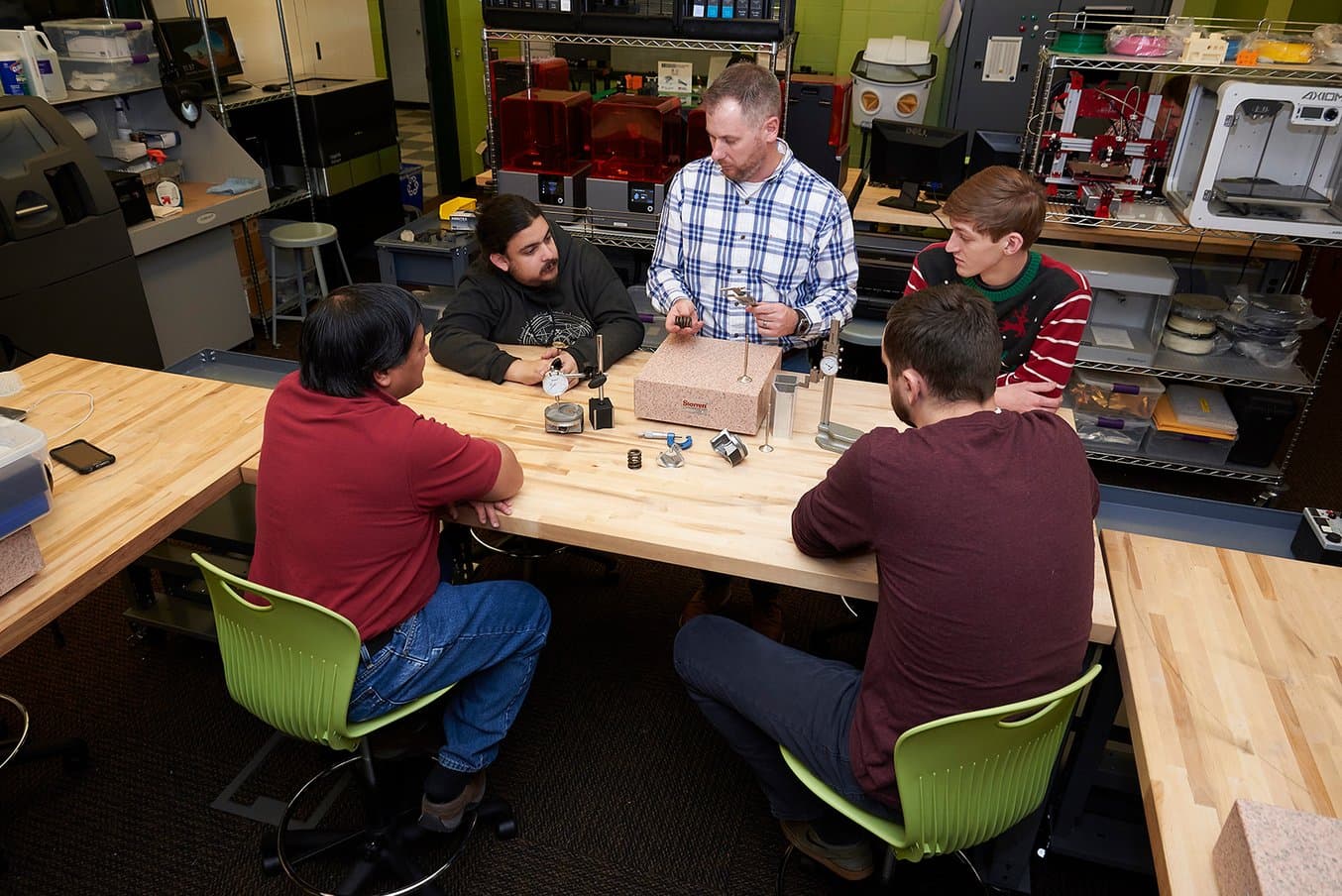
From K-12 schools to post-graduate college programs, 3D printing is a way for educators to encourage more active participation in the learning process. Though research studies abound on different learning styles and the effectiveness of diverse teaching methods, so much of traditional education still relies on rote memorization of reading material. 3D printing offers a way for students to truly connect to the subject matter by physically manipulating ready-printed teaching aids or by designing tools themselves.
For K-12 students especially, this hands-on aspect of 3D printing in the classroom helps improve engagement and participation. To put this theory into practice, Formlabs partnered with Tech Boston Academy, a public high school in Dorchester, Massachusetts that focuses primarily on technology education. Over the course of a 13-week program, Formlabs employees gave lectures and guided the students through a project-based course, culminating in a ‘hackathon’ where students designed, modeled, and 3D printed a tool. The students were able to problem-solve and use CAD skills to develop a solution, then bring their ideas into reality with the Formlabs 3D printers. One student said that the aspect they enjoyed the most “was the ability to materialize physical objects inside my mind into a real thing that I could hold or touch.”
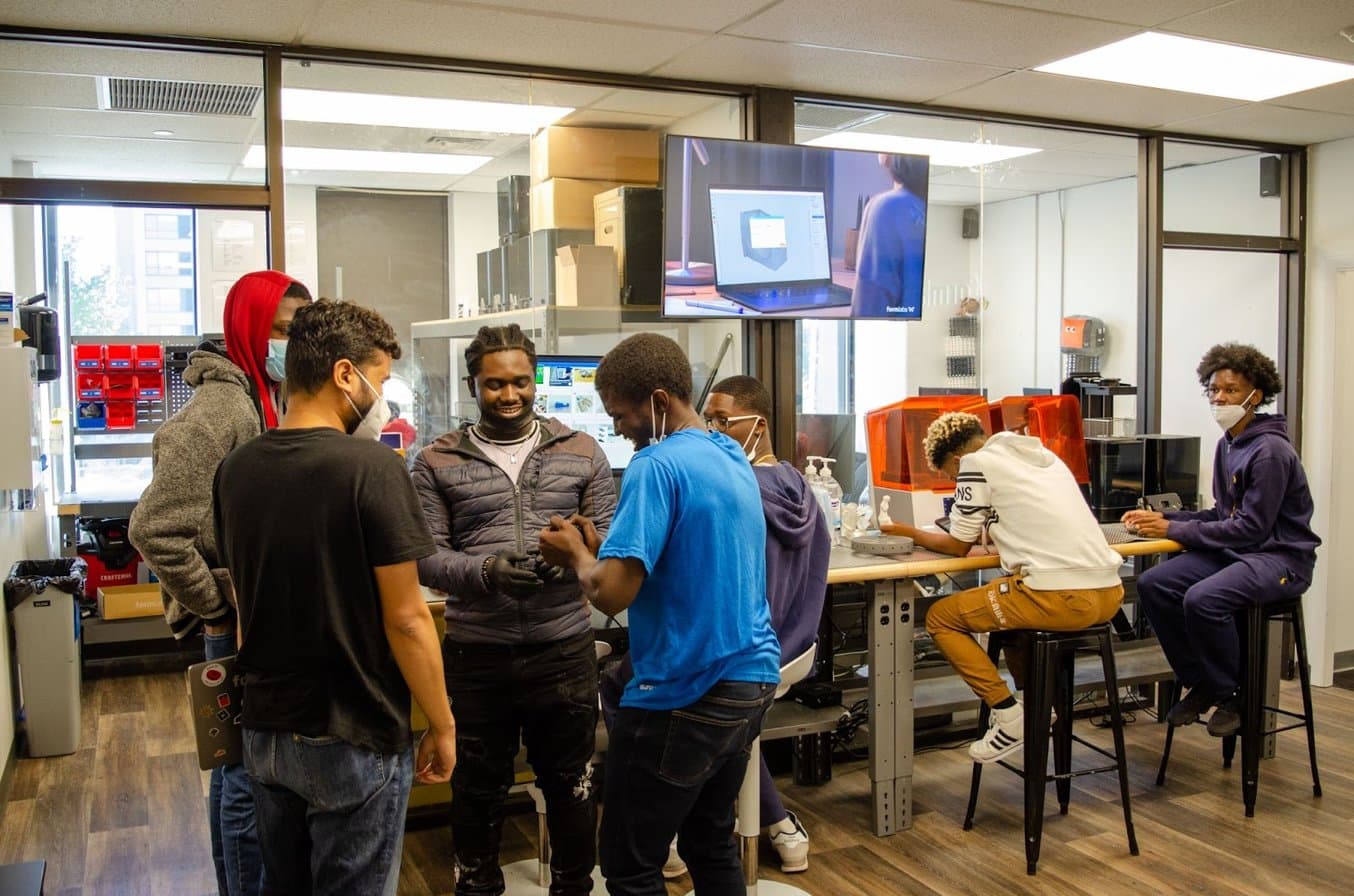
FormEd program participants from Boston Tech Academy in the Formlabs Experiential Hub.
These types of in-person interactions are invaluable for developing young adults. In today’s educational environment, however, face-to-face instruction isn’t always possible. 3D printing ensures that each student has access to the hands-on tools they need and gives teachers the power to change those tools or print extra if necessary. “Our curriculum is very physical. We need machines, building tools, and laser cutters. So one of the casualties of going through the pandemic was that we couldn’t do much physical modeling or physical objects,” says Michael Silver, an architecture professor at the University of Kentucky. Relying on his previous experience with Formlabs 3D printers in the university’s labs, Silver brought a Form 2 home with him, had students send him their STL files, and printed their models out to be discussed at the final evaluation for the class. “We were able to continue to make physical objects during the period of quarantine. 3D printing gave us the ability to still physically implement a prototype during quarantine with everybody only meeting through Zoom and doing remote learning,” Silver said.
Dental school is expensive, no matter what country you’re in. Part of that cost is due to the highly specialized tools that dental students need to learn. Dr. Gülşah Uslu, an instructor in the dental school at Canakkale Onsekiz Mart University in Turkey, began using 3D printers as a way to reduce costs and source a set of tools for each student, rather than ask students to share.
Typically, dental students go through a hands-on training program before they treat their first patient under supervision in the clinic. This training is either conducted on artificial anatomical models or on extracted teeth, both of which are expensive and difficult to procure. Dr. Uslu turned to 3D printing and produced more than 13,000 anatomically accurate artificial teeth models so each student could continue their hands-on learning uninterrupted, without relying on digital learning modules or sharing with classmates. Dr. Uslu was able to continue her high standard of teaching and students were able to focus on personalized teaching tools, increasing their knowledge retention and engagement.
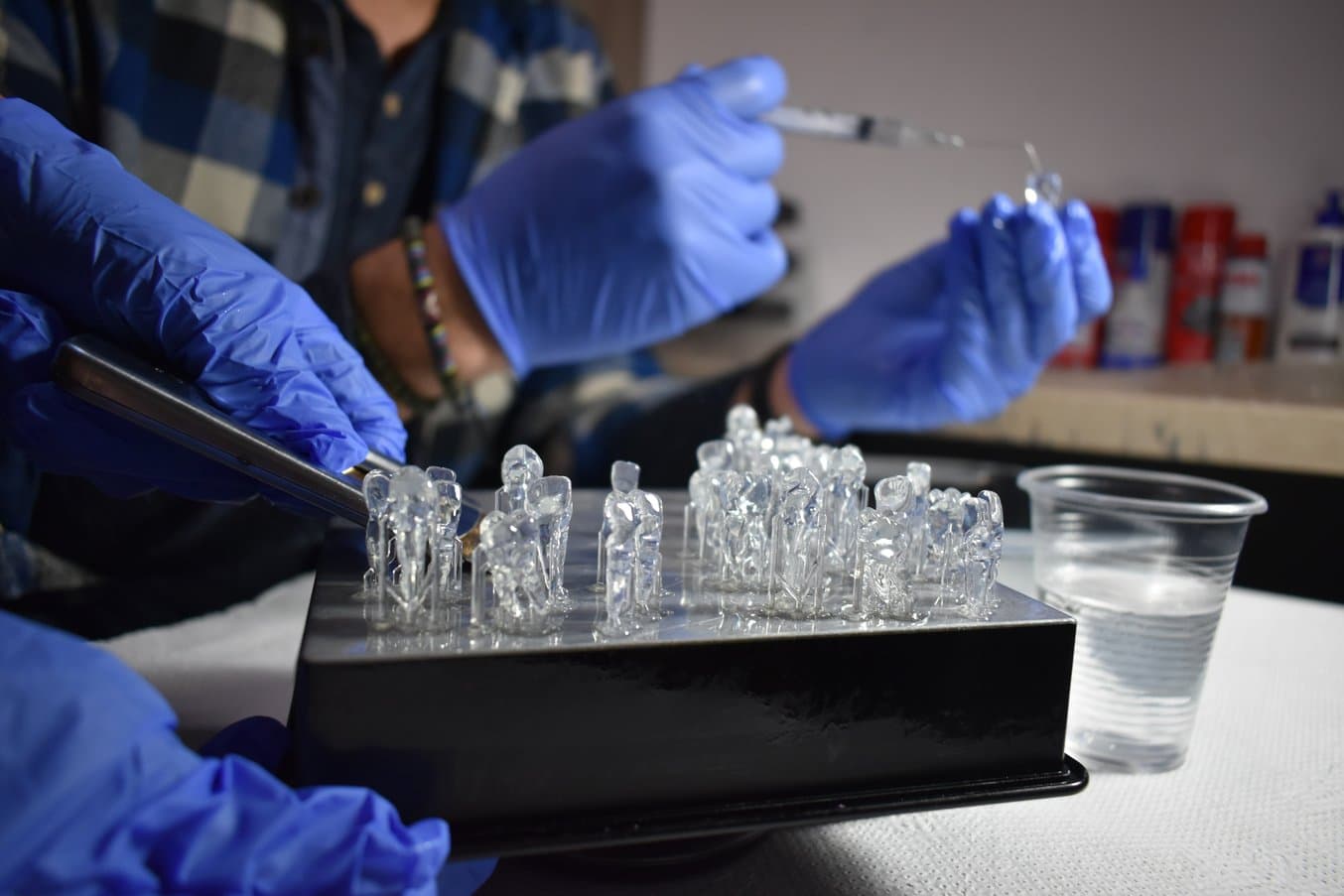
Formlabs reseller BTech Innovation has printed 13,000 anatomically accurate teaching aids.
Professional Development Ready For the Jobs of Tomorrow
Hands-on learning is a major tenet of Morrison Tech’s program, which partners with local industry leaders to deliver a practical, experience-based curriculum. Morrison Tech President Chris Scott sees 3D printing as a way to accelerate a typical manufacturing process, benefiting both the students learning how to 3D print in their classes today, and the companies they’ll one day be a part of. “[With 3D printing] we can see things much more clearly, and indicate where problems may occur, or what may not work or may not feel right to the consumer,” Scott said. “A secondary goal is how can we bring products to market more quickly and more aggressively, and I think that's where additive manufacturing really starts to shine. We can shorten that design cycle.”
As Scott sees it, hands-on learning through 3D printing allows students to identify issues with the things they’re working on much more quickly than working only in a digital medium. Morrison Tech has integrated 3D printing into their curriculum for years, and it has not only benefited students by accelerating their learning, but by preparing them for jobs in the manufacturing industry through Morrison Tech’s many partnerships with local giants like Wahl Clippers, John Deere, and Caterpillar.
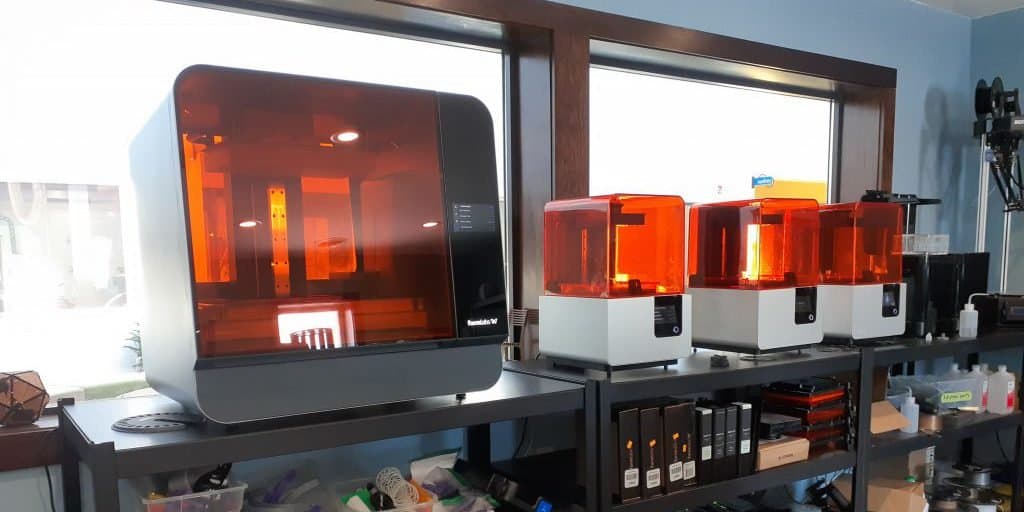
The Form 3L and Form 2 printers at Morrison Tech.
Programs like Morrison Tech partner with local industry leaders for mentorship and internship opportunities. These types of ‘town and gown’ relationships are invaluable for students looking to secure references, practical experience, and real-world problem-solving skills. 3D printing is becoming an ever more important part of that practical experience as manufacturers are scaling their 3D operations and looking for skilled employees.
3D printing provides students an accessible way to meaningfully contribute to the workplace during internships and entry-level positions. Traditional large manufacturing methods rely on expensive equipment and structured workflows—students were relegated to observing the structure or were given menial tasks. With 3D printing, students can take ownership and leverage their CAD skills to design a product idea or a repair part, something the current workforce might not have the time or the knowledge base to do. The students gain valuable experience and skills, while the business gains new perspectives and practical solutions at no cost.
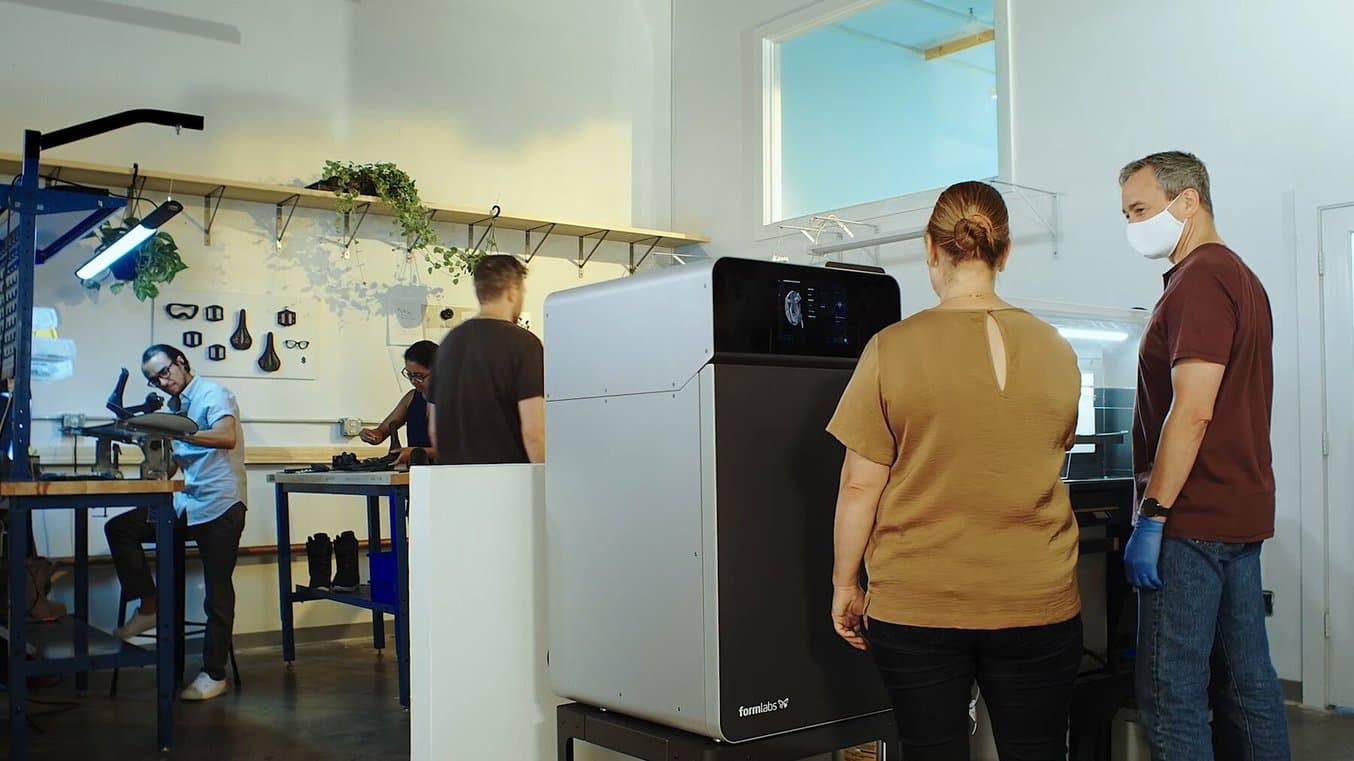
The Fuse Series printers are ideal for both functional prototyping and industrial quality end-use production—perfect for students to contribute meaningfully in internships and with local businesses.
It’s not just large businesses that can benefit—students at Penn State’s Innovation Hub partner with local start-ups and small manufacturers to 3D print low-volume end-use parts. One project involved students printing small widgets for a local business owner that couldn’t afford a tool made for such a small volume. The students were able to take a real-world budgetary issue, and devise a solution through 3D printing—replacing an injection molding process with a direct 3D printed part. Innovation Hub Director Ryan Mandell told us, “A local business owner wanted to print 20 plastic parts, so we looked at the array of Formlabs materials, found a match, and determined it was possible to run 20 plastic widgets in one build on the Form 3L. They had been turned down by injection molding companies because 20 parts was too small-scale, so it was the perfect 3D printing use case." Students at the Hub were able to provide tangible consulting and manufacturing services for this local business owner and by doing so, helped the local community and bolstered their resume.
At Yavapai College, Matthew Mintzmyer, Director of Aerospace Science, 3D Printing and Manufacturing, prepares students for careers in every industry—his recent graduates went on to careers in dental medicine, props work for the Mandalorian television show, and architecture, among many others. “There are tons of applications. People that aren’t in the 3D printing business in schools, they’re behind the curve. It teaches you critical thinking, math, creativeness—everything. You don’t need $100,000 to get started, these printers are affordable,” says Mintzmyer.
Mintzmyer leverages his 3D printers to improve Yavapai students’ experience, but also grow industry opportunities. COBOD, a concrete 3D printing construction firm, sends every new technician to Yavapai to learn how to service, operate, and maintain large industrial concrete 3D printers. This business opportunity for Yavapai is entirely because of Mintzmyer’s early investment and adoption of 3D printing technology. He uses Formlabs SLA and SLS 3D printers to print prototypes, jigs, end-use parts, and repairs for various pieces of other 3D printers. Students at Yavapai get a first-hand view of what it takes for a lucrative career in a burgeoning industry, and get to participate in the training programs alongside the COBOD engineers.
Multidisciplinary Collaboration
Never before have different disciplines been so interconnected. With increasing digitalization, traditionally disparate elements of a product’s lifecycle, like ideation and manufacturing, have more crossover. 3D printing is a large part of this—it speeds up product lifecycle stages to such a degree that the entire evolution can be streamlined, with disciplines blending into each other and improving upon one another. This type of collaboration within a business is also evident in educational institutions’ makerspaces and fabrication labs.
Drexel University’s Westphal College of Media Arts and Design offers programs for students hoping to pursue anything from Animation to Fashion to Virtual Reality, and their centrally located Hybrid Making Lab offers opportunities for every type of project. The Making Lab director Erik Sundquist told us, “students will use it for everything from architectural models, fashion design, accessories, hardware for garments… we have a few students interested in making fully 3D printed articulated fabrics.”
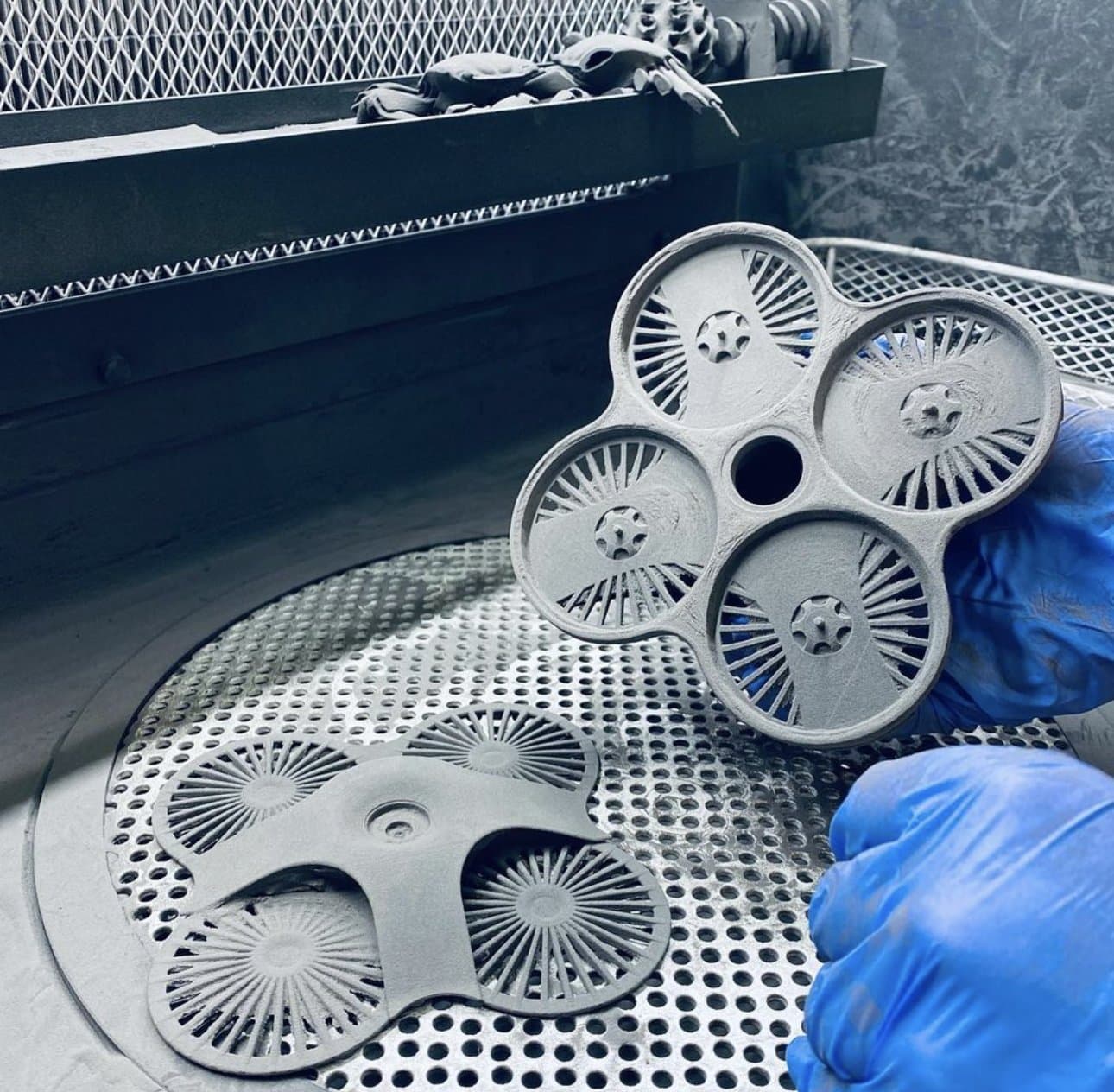
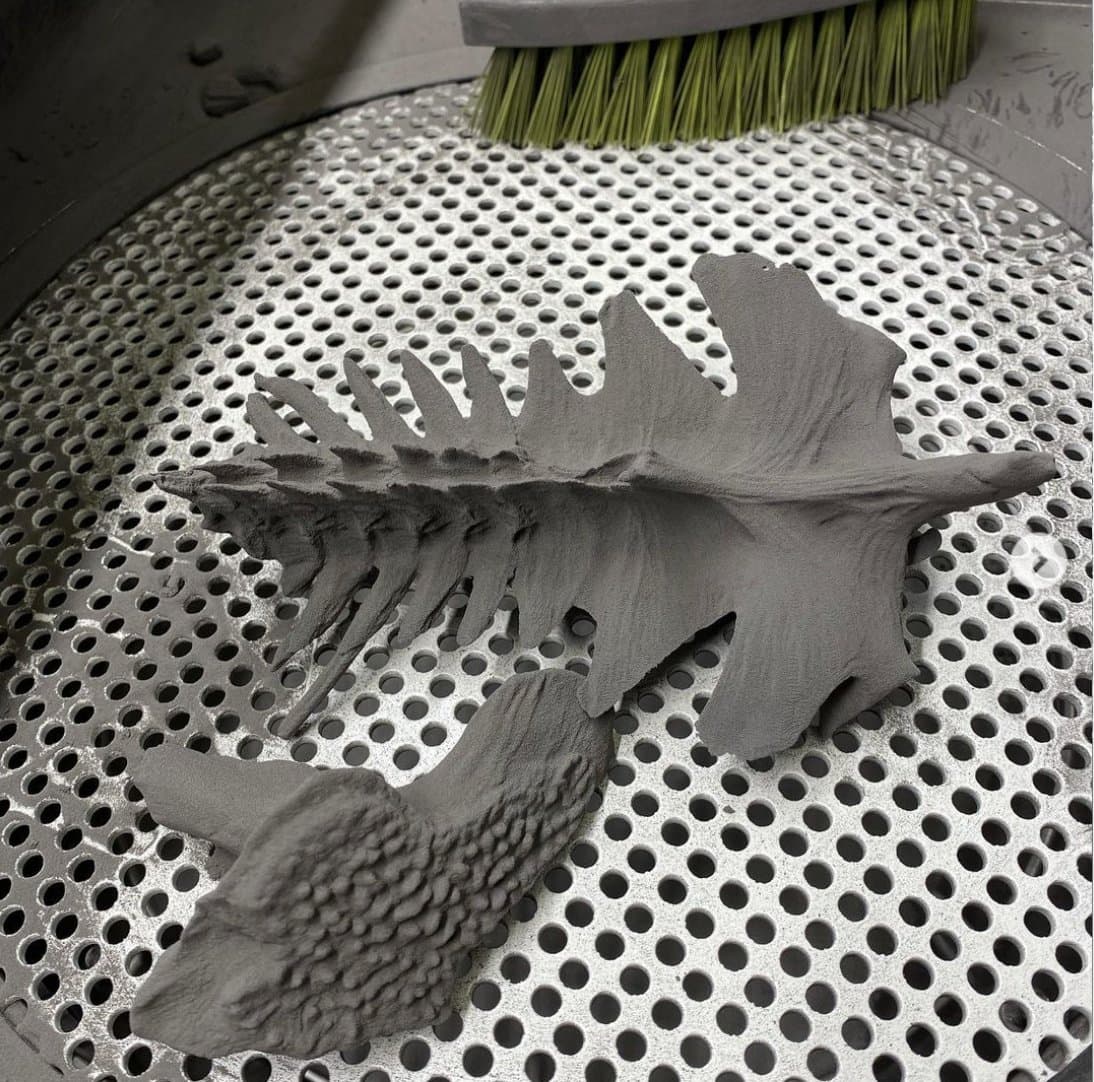
A product design senior thesis project (left) and a sculpture class’s 3D scanned and printed fish bones (right) at Drexel’s Hybrid Making Lab. (photos courtesy of Drexel Hybrid Making Lab).
Sundquist sets up the space so that students are trained, then run the space themselves, responsible for teaching other students, no matter if the project is a different discipline than their own. “It’s more democratic that way and better for interdisciplinary learning,” says Sundquist. He sees students in fashion majors asking for help from engineering students and product design majors for articulating pieces, and vice versa. The centrally located lab is perfect for students to collaborate, share ideas, and exchange expertise, and 3D printing is the impetus behind these types of impromptu brainstorming sessions. A fashion major might see the overall picture, like a chain mail dress, but need an engineering student’s help in designing the tolerances between each chain link, or choosing which technology to use for a support-less print structure.
Empowered Creativity
3D printing can empower students to try new clubs or associations and take their skills from the classroom into a new application. Students at TU Berlin rely on 3D printing to develop high-powered performance race cars for the global Formula Student competition. These cars need to be durable, resistant to high temperatures and impact, and extremely lightweight. The TU Berlin team, often composed of as many as 90 students, relies on Formlabs SLA printers for carbon fiber molding processes and end-use parts.

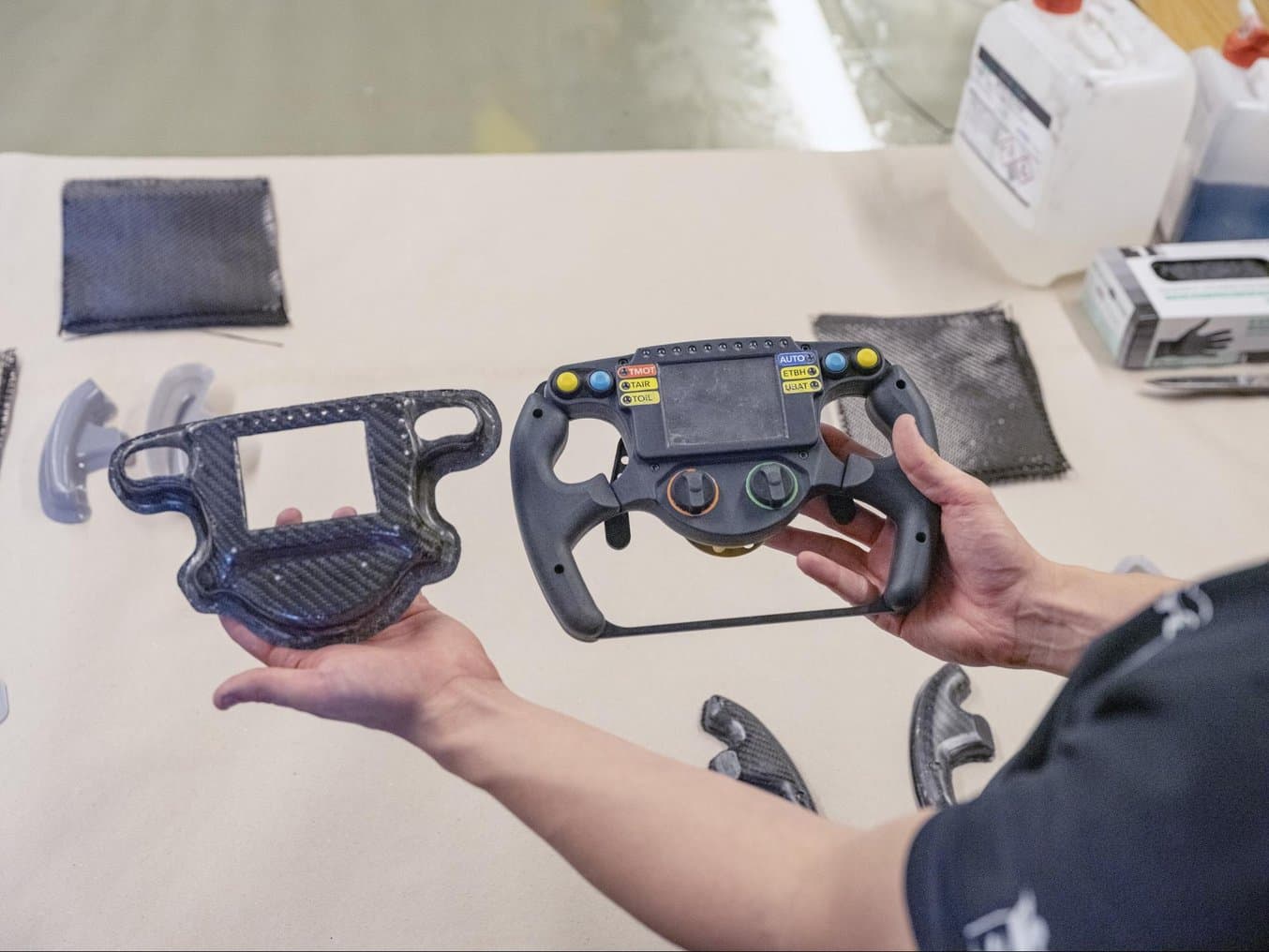
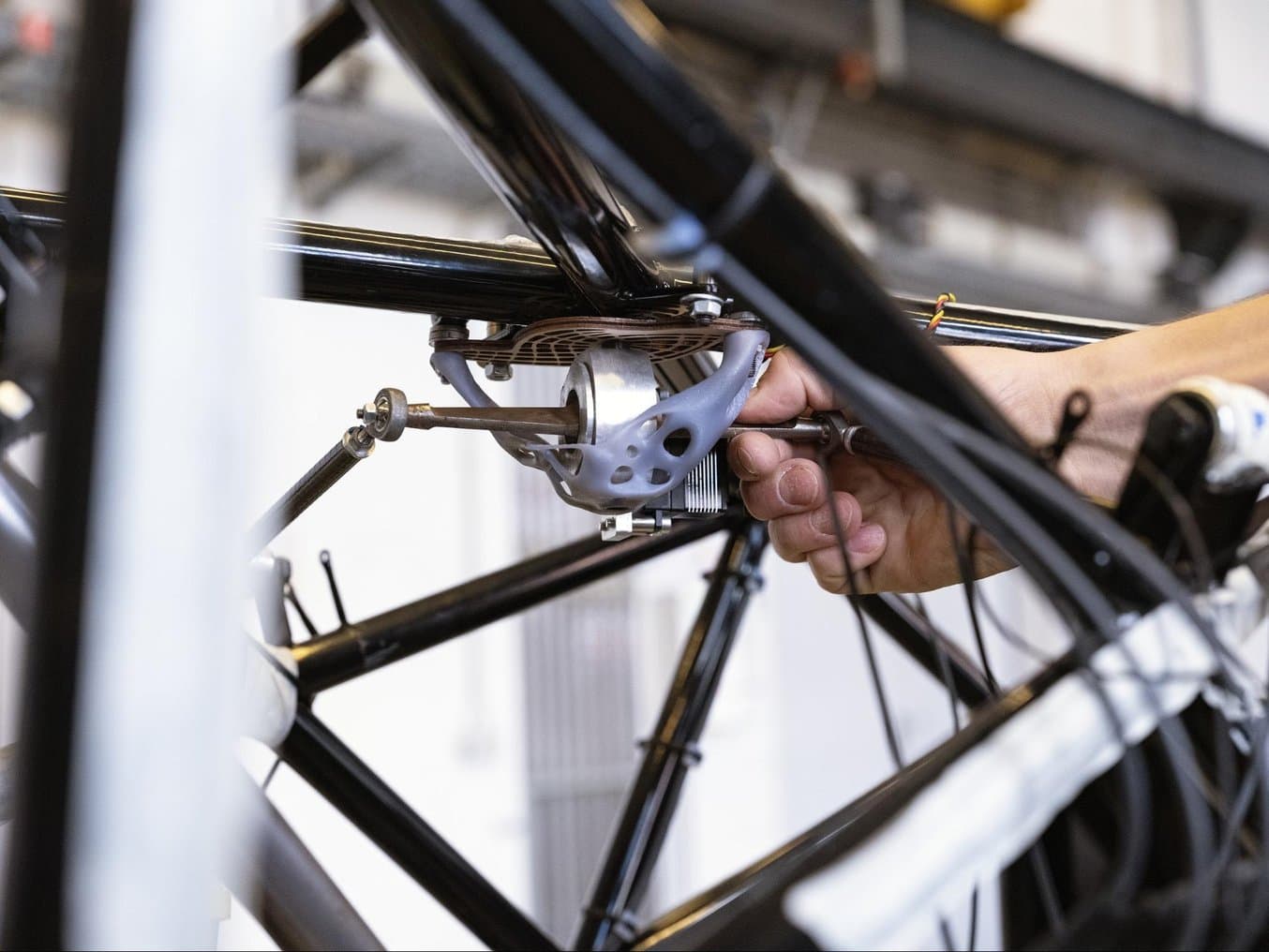
A mold (left picture, left hand) used for molding a carbon fiber steering wheel enclosure (left picture, right hand) and a prototype of a complex topology optimized mount (right picture), both printed on a Form 3 SLA 3D printer.
Access to accurate, reliable, and easy-to-use 3D printers has allowed the TU Berlin team to expand their output—they annually produce three cars, from design to race, within the school year. This technology has enabled a team of young students to work on something they’re passionate about, and deliver not just one, but three performance products on an international stage each year. The skills they develop and the sense of ownership and empowerment they feel wouldn’t be possible if they had to outsource much of their work, or rely on supervisors to operate more expensive machines. The affordability and accessibility of the Formlabs 3D printers empower their creativity and productivity.
Types of 3D Printers For Education
Educators have a monumental task before them, and determining which technology is the best for their curriculum can be an added stress. This section will review the various 3D printers for schools and help clarify which 3D printer is best for different courses and priorities.
Fused Deposition Modeling (FDM) 3D Printers
Perhaps still the most ubiquitous type of 3D printer in education, FDM 3D printers build parts by melting and extruding thermoplastic filament, which a printer nozzle deposits layer by layer in the build area. Its advantages lie in its scalability and affordability, as well as the straightforward nature of the technology, which makes it an easy concept to grasp for school children just learning how to design in CAD.
Though manufacturers do make expensive FDM printers that can cost upwards of $50,000, most units used by educators cost around $1,000-$4,000. FDM printers can deliver parts quickly and through an intuitive visual process—making them a great entry-point for younger students. Once the students begin to design functional parts and multi-part assemblies however, the lower quality surface finish and precision begins to pose a problem. The lower part quality and more narrow range of materials also means that the applications FDM printers can support are limited, especially in a research or higher educational environment. FDM 3D printers are one part of the 3D printing puzzle and a great starting point, but should be taught in concert with other, more advanced types of 3D printing.
Stereolithography (SLA) 3D Printers
Educators were initially slow to adopt traditional SLA 3D printers when prices put them out of reach of a typical school budget. Then, as desktop SLA 3D printers like the Form 2 and Form 3 made the technology accessible and proved their reliability and professional quality, they’ve become relied-upon tools in every educator’s toolkit.
SLA printers are versatile and suitable for many applications due to their superior surface finish, range of material options, and pinpoint accuracy. The isotropic nature of SLA parts also sets them apart from other technologies, and makes SLA the front runner in watertight parts printing.
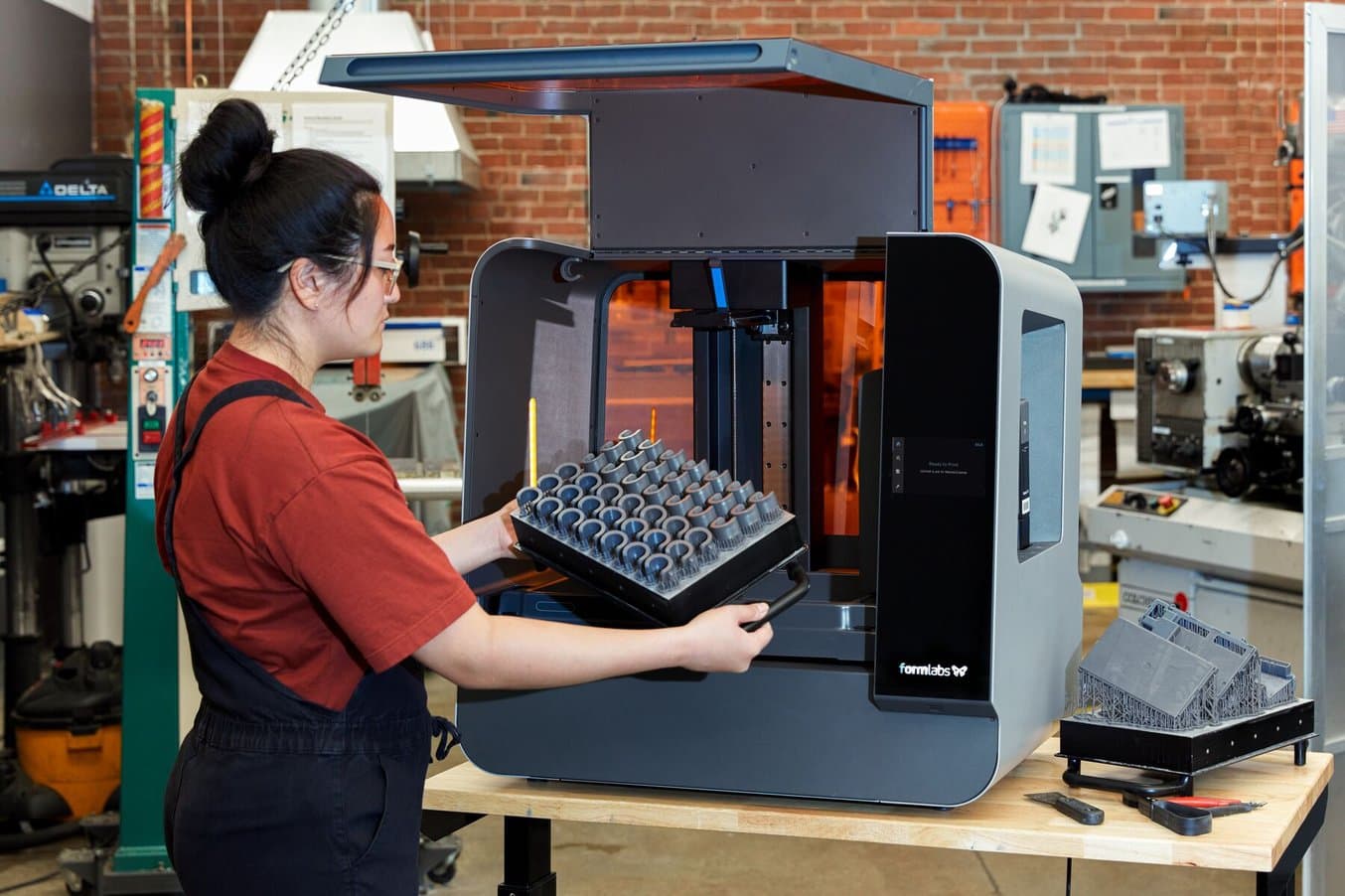
The Form 3L can fit many students’ projects into the large build volume at one time, making it a helpful addition for makerspaces during high-traffic times at the end of the semester.
For research labs, the variety of high-performance materials means that a printer can be added for a specific project, then used again and again as new projects crop up, simply by switching to whatever material is most appropriate—from high- temperature fluidics, to transparent and biocompatible cell scaffolding, to impact-resistant fixtures and casings. In open areas like fabrication labs or makerspaces, the variety of materials continues to shine along with the large build volume possible on the Form 3L. Multiple students’ projects can be fit into one build volume of the same material, then switched out for a new material and new group of students projects. The resin handling and cartridge system streamlines maintenance and operations.

Introduction to 3D Printing With Desktop Stereolithography (SLA)
Looking for a 3D printer to realize your 3D models in high resolution? Download our white paper to learn how SLA printing works and why it's the most popular 3D printing process for creating models with incredible details.
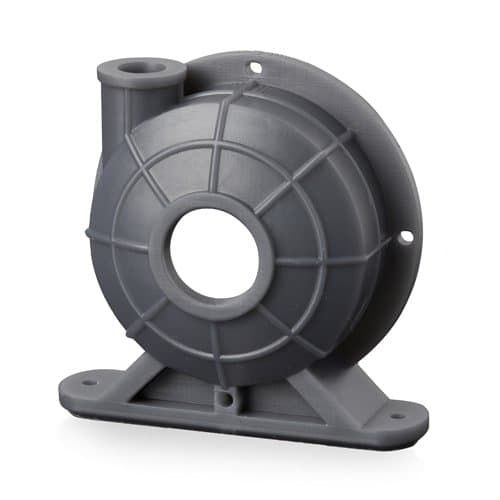
Request a Free SLA Sample Part
See and feel Formlabs quality firsthand. We’ll ship a free sample part to your office.
Selective Laser Sintering (SLS) 3D Printers
Traditionally the most expensive out of the three main types of plastic 3D printing technologies, SLS 3D printers, like the Formlabs Fuse Series, create functional prototypes and durable end-use parts with high-performance mechanical properties. The technology uses a high-powered laser to selectively sinter small powder particles in the shape of a crosssection of the desired file, then repeats the process layer by layer, building the part while each layer is supported by the surrounding powder bed.
Before the Fuse Series, SLS 3D printers cost $200,000 at the minimum and often much more, putting it out of reach for most university operating budgets. Some engineering and manufacturing programs were able to secure grant funding for these units, but the large footprint, complex workflow, and expensive required infrastructure meant that very few students had the opportunity to use them.
With the introduction of the Fuse 1 in 2020, educators at every level were finally able to bring industrial quality SLS in-house, giving their students the opportunity to create end-use parts for real-world applications, and providing them with powder-bed 3D printing experience. Captain Baker at MakerSpace USNA has students use the Fuse 1 SLS 3D printer before moving on to metal 3D printing technology—in which mistakes are much costlier and more common. At the NOAA AOML lab, working in conjunction with the University of Miami’s Cooperative Institute for Marine and Atmospheric Studies (CIMAS), the Fuse 1 SLS printer is used to print rugged underwater enclosures for coral sampling equipment.
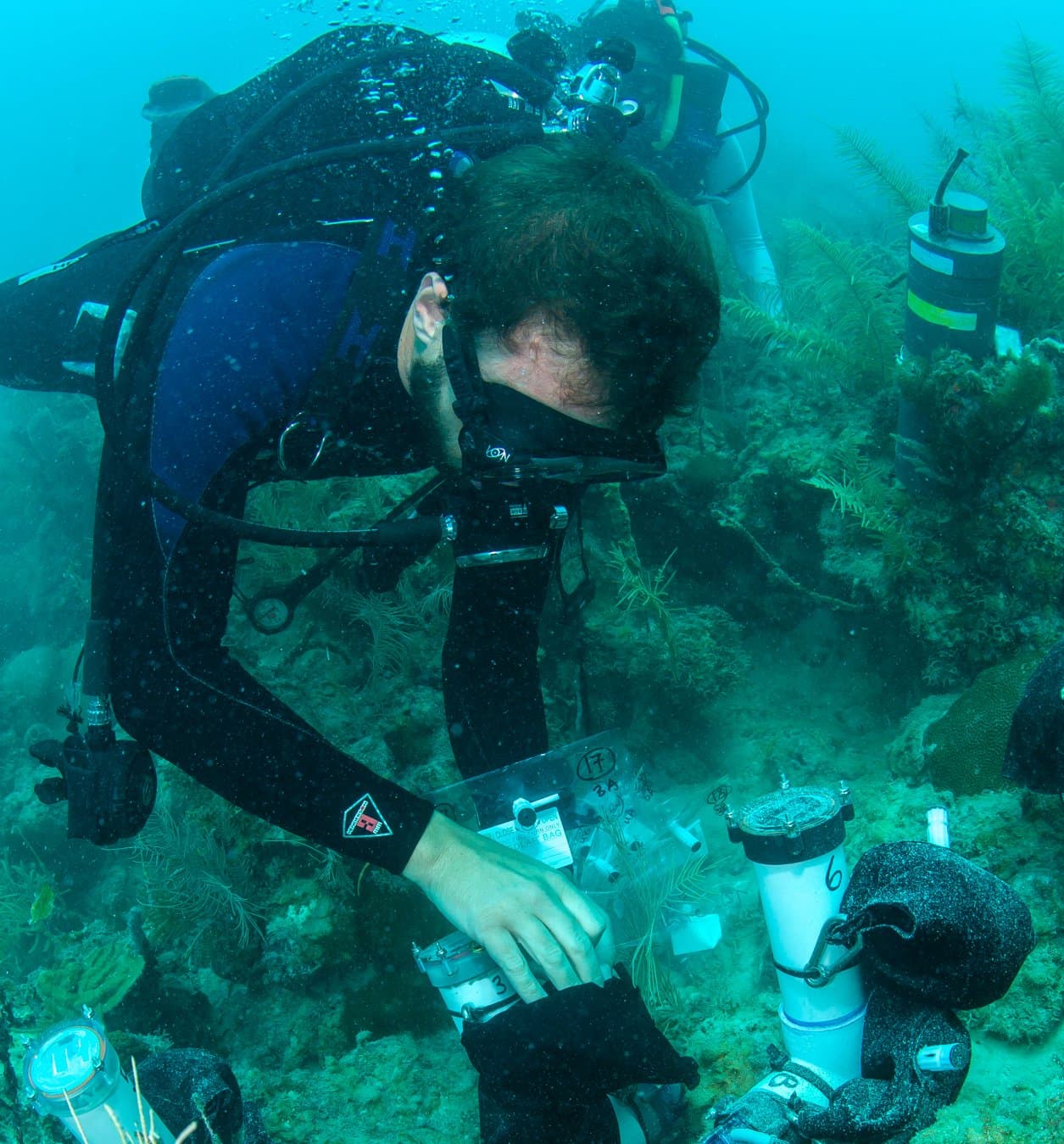
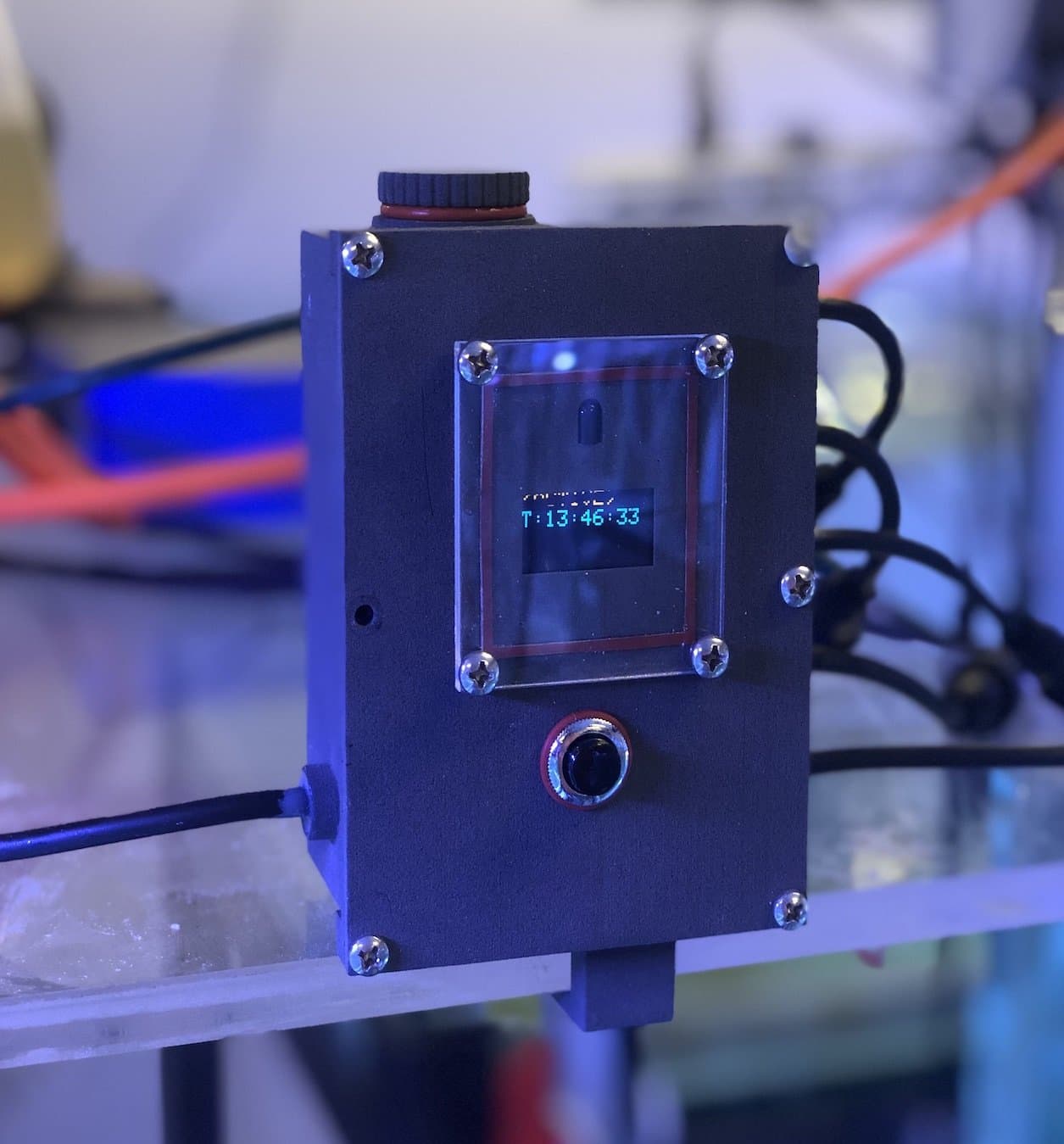
A member of the NOAA AOML lab installs a subsurface autonomous sampler to gather data on wild coral species (left). Inside the NOAA AOML lab, a coral tank monitoring device encased in a Fuse 1 printed SLS part (right).
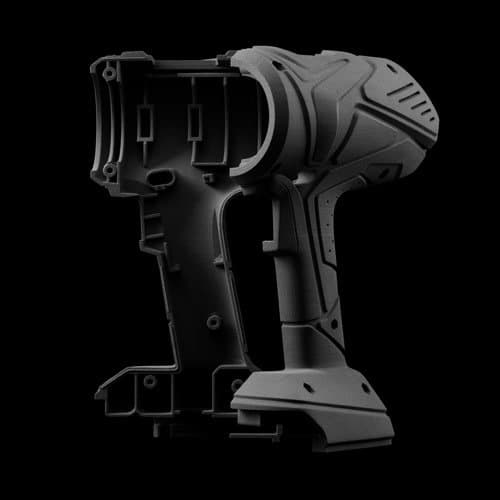
Introduction to Selective Laser Sintering (SLS) 3D Printing
Looking for a 3D printer to create strong, functional parts? Download our white paper to learn how SLS printing works and why it's a popular 3D printing process for functional prototyping and end-use production.
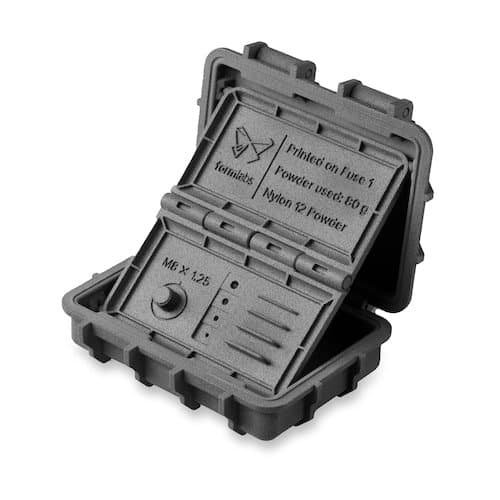
Request a Free SLS Sample Part
See and feel Formlabs quality firsthand. We’ll ship a free SLS sample part printed on the Fuse 1+ 30W to your office.
Different Tools for Different Jobs
The needs of educators vary widely—from the eighth grade ‘Intro to 3D Design’ teacher to the postgraduate researcher, there isn’t one job description or role. Similarly, there can’t be one 3D printer that solves every problem. Leveraging different 3D printing solutions for different applications and environments is the best way to make sure students are engaged, encouraged and empowered, and prepared for their careers. For example:
-
FDM printers, with their simplicity and low price-point, may be ideal for K-12 schools.
-
SLA printers are the most versatile—the range of material options, prices, and sizes coupled with the high accuracy and smooth surface finish make it easy to choose an SLA printer for your project.
-
SLS printers deliver industrial power printing with proven, functional end-use materials like nylon. Models like the Formlabs Fuse 1+ 30W do so at an accessible cost, making it possible for students to master powder-bed printing without relying on grant funding.
How to Choose the Right 3D Printing Environment
Each educational institution will have its own preferences and abilities for making 3D printers accessible to students. For most universities, the addition of 3D printing labs is managed by department heads, while at others, large grants might be given to create a multi-disciplinary space open to all.
3D printers can improve the learning experience in any situation, whether used in small research labs for specific projects, or in large makerspaces, fabrication labs, innovation hubs, or entrepreneurial incubation centers.
3D Printing in Research Labs: Versatile Tools for a Wide Range of Niche Applications
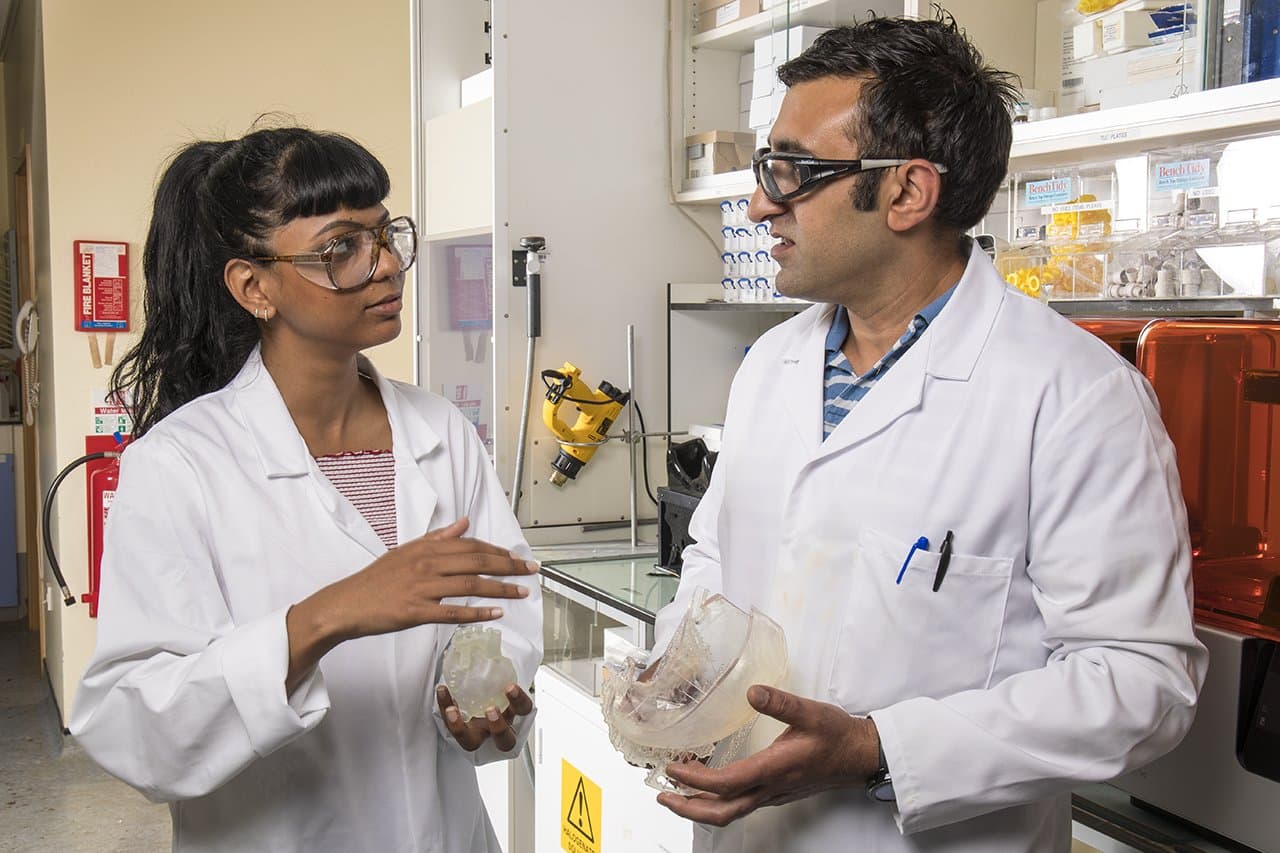
Research labs vary widely in scope, size, and subject matter, but because they’re all dedicated to advancing scientific understanding, cutting-edge technology like 3D printing has been incorporated for years. At the University of Hawaii’s Nanotechnology Lab, an undergraduate student is in charge of operating and maintaining the Form 3 and Form 3L SLA printers that help undergrads, post-graduates, and doctoral candidates create research materials. The largest use-case for the printers in the lab is for sacrificial compaction molds for high-performance ceramic nanomaterials.
“We needed to have a solution where we could prototype and make molds very rapidly with structural integrity and smooth surface finish. We had the Form 3, and were very happy—it has the biggest legitimate catalog of materials to print from. As far as the Form 3L, we wanted the big form factor for big ceramic molds,” the student told us.
At the University College of London School of Pharmacy, the printers are used for visualization tools of anatomical parts. A model of a gastrointestinal tract, for example, is used to help students understand how food (and medicine) are processed and passed through the body, which helps in their understanding of how to safely medicate patients. The accuracy of the Formlabs printers allow researchers to create lifelike models of extremely complex systems in the body. “I use the Formlabs 3D printer to print molds for medical devices for a ventilation therapy project,” said Zaid Muwaffak Hassan, a PhD student in the UCL Hilton Lab. “It’s very easy to use, very accurate, and has really high details.”
In the lifesciences, accuracy and precision can mean all the difference for these students. Their projects are real life-saving devices and practices. Having accurate tools that properly represent the body, or have the biocompatibility necessary for skin or mucosal contact, is integral to their success, and therefore the health of their patients.
3D Printing for Makerspaces: Many Users, Unpredictable Usage
Makerspaces and fabrication labs are generally open to large, varied groups of students, and some also open their doors to the surrounding community, professors, or local K-12 programs. It’s because of this unpredictability in usage that planning ahead and budgeting are difficult for makerspace directors. Even when only open to university or college students, the busiest times might be limited to just the end of the semester when final projects are due. 3D printers for makerspaces have therefore traditionally been a quantity over quality consideration—directors need to make sure that when everyone comes rushing in, they can use a 3D printer with minimal oversight, scheduling, or training.
For many years, this led to large installations of FDM printers being the main (or sometimes only) technology available in makerspaces. In the past five years, however, 3D printers like the Form 3+, Form 3B+, Form 3L, and Fuse Series have gained popularity for a number of reasons.
The Formlabs suite of printers combines the industrial power and accuracy of expensive 3D printers with the ease of use and affordability of entry-level machines. Additionally, the diverse range of materials available means that a makerspace can offer one printer with multiple appropriate materials for engineering, product design, jewelry, fashion, materials science, or manufacturing students. The intuitive workflow enables students to quickly pick up the necessary operating knowledge and the reliability of the SLA and SLS print engines ensures that very little maintenance or oversight is required.

The MakerSpaceUSNA advanced section, housing Form 3 and Form 2 printers, as well as FDM printers.
At the United States Naval Academy’s MakerSpaceUSNA, every single student, regardless of major, is exposed to FDM, SLA, and SLS technologies. MakerSpace director Captain Brad Baker has added to his fleet of Formlabs machines steadily over the years, touting the reliability and consistency of the machines as major reasons for his continued investment. “The failure rate on our SLA printers is extraordinarily low. I tell [the students], ‘wait until you get to SLS.’ On SLS [Fuse Series], it’s almost 0. Virtually no failures, material properties are good, and the accuracy is really good,” says Baker.
Entrepreneurial Incubators: Jump-Starting Innovation With SLA and SLS 3D Printing
Though many universities include entrepreneurial courses in finance or management as part of a typical business school curriculum, fewer of them offer hardware product design and development support outside of curriculum coursework. Recently, some schools have sought to set themselves apart by providing extensive support and resources for small businesses, especially hardware and product design entrepreneurs.
At the University of British Columbia in Vancouver, Canada, the HATCH Venture Builder is a collaborative institute that supports teams of students and alumni through advisory teams, office space, wet labs, and a state-of-the-art makerspace. The Hatch provides 3D printers like the Form 3 and a range of materials, as well as advice and mentorship on product design and go-to-market strategy. They rely on professional 3D printers from Formlabs to help incubator members present a high-quality, functional prototype or end-use part to potential investors and manufacturers. At Penn State, Mandell and the Innovation Hub strives to provide, “access to the best tools possible in order for individuals and groups to develop a strong proof-of-concept, to generate investment in their idea."
Get Started With 3D Printing in Education
Education is about preparedness for the future—not just the future careers of the students, but the future of our society, which will inevitably be created by them. Investing in that future, by providing high-quality tools and resources to these students, is the best way to ensure that the future stays bright for everyone.
There is no doubt that 3D printing will have a major role to play, and we’re already seeing the benefits of the technology; there are 3D printed homes, prosthetics, surgical devices, drones, hearing aids, and electric engine components. Every educator needs to incorporate 3D printing to provide the opportunity to learn more about the technology that’s shaping the world. To speak to the Formlabs Education team and learn more about 3D printers in education, contact our team below.
